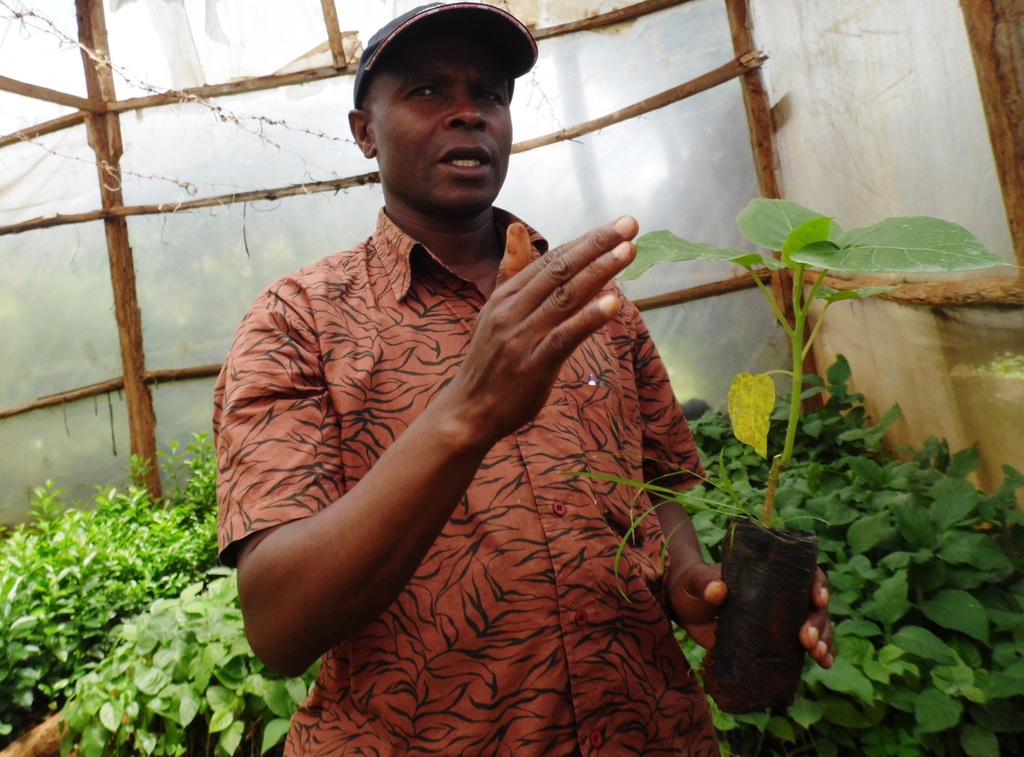Grafting is becoming one of the commonest methods of improving crop yields, increasing resistance to diseases and boosting tolerance to harsh weather among other desirable characteristics.
Grafting involves bringing together part of the crop to be improved ad uniting it with another, which has superior characteristics.
For instance, hybrid tomatoes, which are affected by nematodes and other soil-borne diseases, can be boosted by other wild trees not affected by the infections.
Jesse Kioria grafts tree tomatoes with bitter leaf to boost their resistance to nematodes because the earlier plant is not susceptible.
Involves many methods, but the most common is the use of rootstock and scion. The rootstock is the lower part which has the desired characteristics a farmer wants to ‘import’.
In the case of Kioria, bitter leaf is the rootstockk while the scion is the tomato tree. At the end of the process, what is on top of the resultant crop dominates-to mean the tamarillo will be expressed while the rootstock characteristics will be expressed internally.
Grafting plants must have at least four mature leaves after germination. His would increase chances of healing at this tender age.
The two plants must be of almost same size in radius to ensure the cambiums unite with ease for seamless flow of nutrients during and after recovery. The ‘candidates’ must be watered 12-24 hours ahead of the process. Similarly, it should be done in the morning when the rate of transpiration is low to avoid water stress.

The grafter should sterilize their hands and razor blades with a disinfectant to reduce chances of infections.
In splice grafting, cut the rootstock stem below the cotyledon at 45 degrees or flat. Uniting the two should be done quickly to avoid air bubbles entering the water flow system, which will hinder transpiration.
Kioria ties the two at the joining point with a tight polythene strip or parafilm to allow for healing in his greenhouse.
Wedge or cleft grafting involves ‘splitting’ the rootstock into a 0.5 cm ‘Y’ shape before inserting a fitting scion that has been shaped to look like an axe. It is has higher chances of success than splice because of the tight holding.
Kioria wraps the scion with a misted transparent polythene bag chamber.
READ ALSO:How grafting can help citrus farmers beat EU chemical regulations
Side or tongue grafting requires a 45 degrees matching incision into the rootstock. Tongues, which are like buds are inserted into the curved hip of the rootstock. Wrap parafilm or binding material. After about five days the bud could have healed and the top, part of the main plant is cut carefully and discarded.
The plants are ready for transplanting after healing, which takes eight days or more, depending on the plants types involved.
READ ALSO: Farmers count on grafting for more yields and incomes
By uniting the bitter leaf with tree tomato, Kioria also alleviates tolerance to reduced water moisture because the scion has a tap too that collects water and minerals from deeper regions unlike the fibrous of the scion crop.
PHOTO BY LABAN ROBERT
Write comment (0 Comments)














